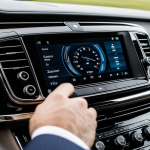Understanding Hybrid Vehicle Batteries
Hybrid vehicles rely on advanced battery technology to seamlessly switch between gasoline and electric power, which improves fuel efficiency and reduces emissions. These batteries, predominantly lithium-ion or nickel-metal hydride, store and supply energy for various functions, contributing to the vehicle’s overall efficiency.
A prevalent misconception is that hybrid vehicle batteries have a short lifespan, necessitating frequent replacement. In reality, hybrid battery lifespan often extends to 8-10 years or over 100,000 miles, depending on the technology used and maintenance practices. Factors influencing the lifespan include driving patterns, climate, and adherence to upkeep recommendations. Frequent short trips or extreme temperatures can accelerate wear on the battery.
Additional reading : Revealing the Risks: What You Should Know Before Adding Performance Chips to Your Turbocharged Car
It’s also misunderstood that hybrid batteries are completely different in principle from other rechargeable batteries. However, both rely on similar electrochemical processes; what sets them apart is the integration with vehicle systems, which requires precise engineering for optimal performance.
Recognising these details helps in dispelling worries regarding durability and cost. By understanding the technology and debunking misconceptions, hybrid vehicle owners can better appreciate their vehicles’ capabilities and focus on sustainability and efficiency, without undue concern about battery longevity.
In parallel : Essential Guide: Securely Install and Easily Access a Fire Extinguisher in Your Commercial Vehicle
Best Practices for Charging Hybrid Batteries
Hybrid vehicle owners must adopt the right charging habits to maintain battery health and performance over time. One crucial aspect is the charging frequency. Unlike fully electric vehicles, hybrids do not require constant charging, as they recharge through regenerative braking and engine power. However, when external charging is an option, ensuring batteries are not overcharged or fully depleted can extend their lifespan.
Battery management is critical. An integrated battery management system (BMS) helps maintain optimal battery performance by monitoring charge levels and temperatures. Vehicle owners should ensure their BMS is functioning correctly and follow manufacturer guidance on optimal charging practices.
In the UK, eco-friendly charging options are gaining popularity. Though the frequency of external charging might be low, using solar panels or other sustainable power sources aligns with the environmental goals of hybrid technology. Additionally, some manufacturers provide systems that intelligently schedule charging during off-peak hours, reducing costs and environmental impact.
By adhering to these charging protocols, hybrid owners can not only protect their batteries but also contribute to a sustainable driving ecosystem, aligning personal practices with broader green initiatives. Proper charging habits are integral to prolonging battery life.
Maintenance Tips for Hybrid Vehicle Batteries
Regular battery maintenance is crucial for extending the longevity and performance of hybrid vehicle batteries. Ensuring batteries thrive involves specific practices, from routine checks to professional servicing.
Performance checks should be conducted periodically. This includes monitoring charge levels and inspecting for signs of wear or damage, which could indicate underlying issues. Consistent checks help preempt problems that might otherwise lead to more costly repairs.
Seeking servicing from qualified professionals ensures any required interventions are timely and precise. Technicians can perform comprehensive evaluations, using diagnostic tools to assess battery health. This could be instrumental in identifying potential problems.
For hybrid owners in the UK, understanding local resources for battery services is advantageous. Many automotive centers offer specialized hybrid battery services tailored to specific car models, utilizing manufacturer protocols.
Engaging reliable service centers ensures the advice received is rooted in the latest advancements in battery maintenance. These practices, alongside diligent performance monitoring, empower vehicle owners to sustain battery efficiency and eco-friendly operation over the vehicle’s life cycle, reducing expenditures and environmental impact. Always consult with certified professionals who are familiar with the intricacies of hybrid technology for optimal maintenance outcomes.
Addressing Common Myths and Misconceptions
In the realm of hybrid technology, battery myths often cloud the understanding of these vehicles’ true capabilities. A prevalent misinformation is the notion that hybrid battery charging must occur as frequently as fully electric vehicles. Yet, hybrids primarily use regenerative braking and the engine for recharging, calling for less frequent plugging in. This perpetuates user expectations that are not aligned with actual vehicle operations.
Furthermore, concerns about battery replacement costs are exaggerated. Many believe these are recurrent expenses due to high wear, but most hybrid batteries last well over a decade. Maintaining correct charging habits and conducting regular performance checks ease worries about premature failures. These measures prolong battery life without incurring exorbitant costs.
Another misconception involves the environmental impact of hybrids. Critics argue batteries are difficult to recycle, impacting the ecology negatively. However, modern battery technology includes recycle-friendly materials, and manufacturers continue to enhance recycling processes.
Educating users on realistic expectations can alleviate these concerns. Understanding that manufacturer recommendations are designed to maximise performance and longevity is crucial for realistic battery lifespan anticipation. Comprehensive knowledge equips hybrid users to dispel myths, leading to informed decision-making regarding purchase and maintenance.
Environmental Considerations for Battery Longevity
The unique climatic conditions in the UK can significantly impact the longevity of hybrid batteries. Temperature fluctuations are a primary concern; both extreme cold and high heat can diminish battery efficiency. Batteries tend to function optimally in moderate conditions, so prolonged exposure to extremes might necessitate more frequent battery maintenance.
To mitigate temperature effects, hybrid owners can follow some practical steps. Parking in shaded areas during summer and using garages in winter can prevent temperature-induced degradation. Additionally, it is advisable to utilise vehicle settings designed for climate control, which can stabilise battery performance amidst varying temperatures.
Understanding how different driving conditions affect battery lifespan is equally crucial. Stop-start urban traffic, for instance, can strain the battery more than smooth highway driving. This is due to the frequent acceleration and braking, which demand increased battery usage. Adopting energy-efficient driving habits, like gradual acceleration and deceleration, can aid in prolonging battery life.
Incorporating these environmental considerations into daily habits not only enhances battery longevity but also aligns with the broader goals of sustainable and responsible hybrid vehicle usage. Hybrid owners in the UK can enjoy a balance of performance and efficiency with mindful battery care.
Understanding Specific Hybrid Models and Their Batteries
The variety among hybrid vehicle models highlights differing battery types and performance standards. For instance, the Toyota Prius often uses nickel-metal hydride batteries, while newer hybrids, like the Hyundai Ioniq, prefer lithium-ion options. Each type offers unique advantages, such as the energy density of lithium-ion. Differences in battery specifications influence not only the vehicle’s performance but also the driving experience.
Manufacturer recommendations outline crucial maintenance practices. They stress regular performance checks and component diagnostics. Manufacturers advise against deep discharges for some lithium-ion models and recommend maintaining a stable charge to prolong battery lifespan. Following these guidelines ensures longevity and effectiveness.
Comparing battery lifespan across various models helps potential buyers and owners make informed decisions. Generally, models utilizing advanced lithium-ion technology tend to showcase extended lifespans compared to earlier technologies. For example, many modern hybrids can exceed 100,000 miles with proper care.
By understanding these variations, consumers can align their choices with specific needs, ensuring battery care is adequately addressed. This awareness aids in maximising hybrid benefits over time, fostering both performance and sustainability. Proper insights into model-specific attributes contribute to informed and strategic vehicle management decisions.





